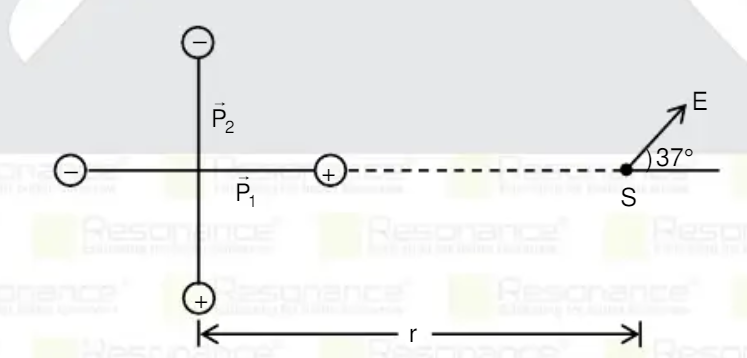Two electric dipole −→P1 and −→P2 are kept as shown in figure. Net electric field at point S is E makes an angle 370 with −→P1 then find ratio of −→P1 and −→P2 
44230
44228
44257
44289
Step by step video & image solution for Two electric dipole vec(P_1) and vec(P_2) are kept as shown in figure. Net electric field at point S is E makes an angle 37^0 with vec(P_1) then find ratio of vec(P_1) and vec(P_2) by Physics experts to help you in doubts & scoring excellent marks in Class 12 exams.
Updated on:21/07/2023Topper's Solved these Questions
- JEE MAIN 2021BOOK - JEE MAINS PREVIOUS YEARCHAPTER - JEE MAIN 2021EXERCISE - SECTION-A
80 Videos
- JEE MAIN 2021BOOK - JEE MAINS PREVIOUS YEARCHAPTER - JEE MAIN 2021EXERCISE - SECTION-B
40 Videos
- JEE MAINBOOK - JEE MAINS PREVIOUS YEARCHAPTER - JEE MAINEXERCISE - All Questions
473 Videos
- JEE MAIN 2022BOOK - JEE MAINS PREVIOUS YEARCHAPTER - JEE MAIN 2022EXERCISE - Question
492 Videos
Similar Questions
What is the angle between →P and the resultant of (→P+→Q) and (→P−→Q)
View SolutionAn electric dipole is placed in an electric field. Column I is the description of electric field and the angle between the dipole moment →p and the electric field intensity →E and Column II gives the effect of the field on the dipole. Then,

View Solution
Knowledge Check
What is the angle between →P and the resultant of (→P+→Q) and (→P−→Q)
AZeroBtan−1(P/Q)Ctan−1(Q/P)Dtan−1(P−Q)/(P+Q)If →P.→Q=PQ, then angle between →P and →Q is
A0∘B30∘C45∘D60∘A dipole of dipole moment →P is placed in uniform electric field →E, then torque acting on it is given by
A→τ=→P.→EB→τ=→P×→EC→τ=→P+→ED→τ=→P−→E
If ∣∣→P+→Q∣∣=∣∣→P−→Q∣∣ , find the angle between →P and →Q.
View SolutionAn electric dipole of moment →P is lying along a uniform electric field →E. The work done in rotating the dipole by 90∘ is:
View SolutionIf two unit vectors →pand→q make an angle π3 with each other, what is the magnitude of →p−12→q ?
View SolutionThe torque τ acting on an electric dipole of dipole momtn →pin an electric field →E is
View SolutionWhat can be the angle between (→P+→Q) and (→P−→Q) ?
View Solution
